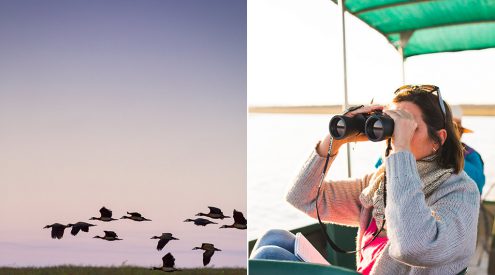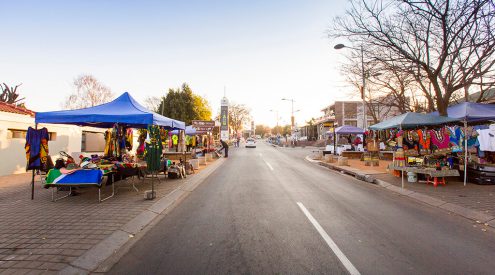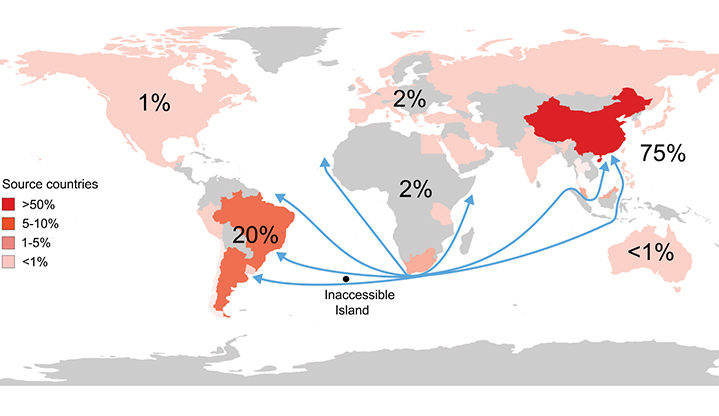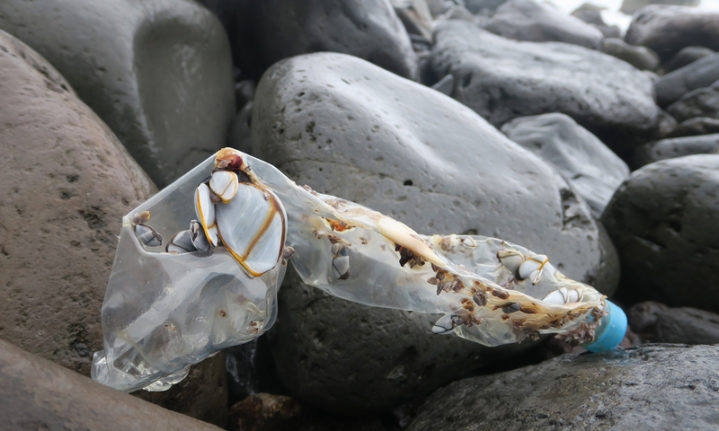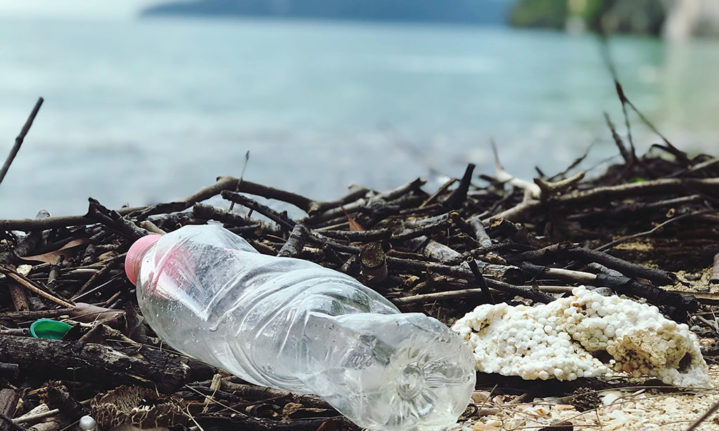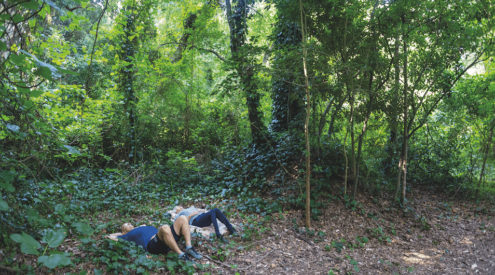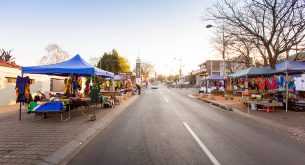Inaccessible Island is a small, uninhabited piece of land in the Southern Atlantic Ocean, thousands of kilometres from any continent. Despite being so remote its shores are full of plastic which, according to new research led by the University of Cape Town (UCT), doesn’t originate from from land but rather from ships that dump litter at sea in contravention of international law.
‘Recent studies of litter in the North Pacific garbage patch and remote islands in the Pacific Ocean show that fishing gear and other shipping-related equipment account for much of the mass of plastic at sea,’ says UCT Professor Peter Ryan, an expert on marine plastics who led the research.
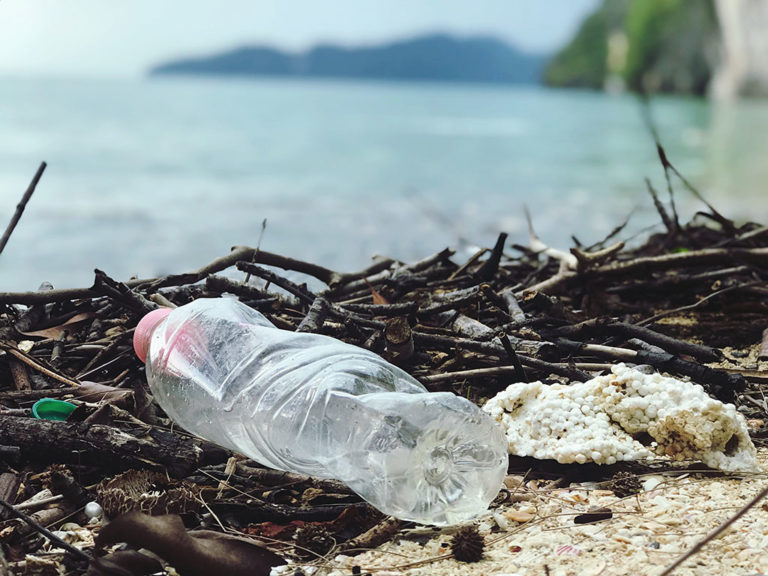
‘The challenge comes in understanding the origin of “general” litter – food packaging and domestic products – which could come from ships or land-based sources,’ he said.
The dumping of plastics and other waste matter that is slow to degrade was banned in 1989 and therefore it’s been widely assumed that about 80% of litter in the ocean comes from on land. ‘However, we have little hard evidence to confirm the importance of land-based sources for plastic in remote areas.’
The whirlpool effect
Giant circular oceanic surface currents, known as gyres draw floating plastic rubbish into the middle of ocean basins. Ironically, isolated oceanic islands like the uninhabited Inaccessible Island that lies just south of the South Atlantic gyre can ‘collect a disproportionate amount of plastic pollution, despite being far from the major plastic-waste sources.’
This island and the litter it accumulates has been used as a sampling net for South Atlantic Ocean litter, helping scientists, led by UCT, to piece together clues to the origins of the ‘general’ plastic in our oceans. Researchers spent three-months on Inaccessible Island, which acted as a sampling net for South Atlantic Ocean litter, studying plastic bottles they had collected and combined this with models of oceanic currents to figure out whether the bottles could’ve have drifted from the country where they were made.
Finding the source
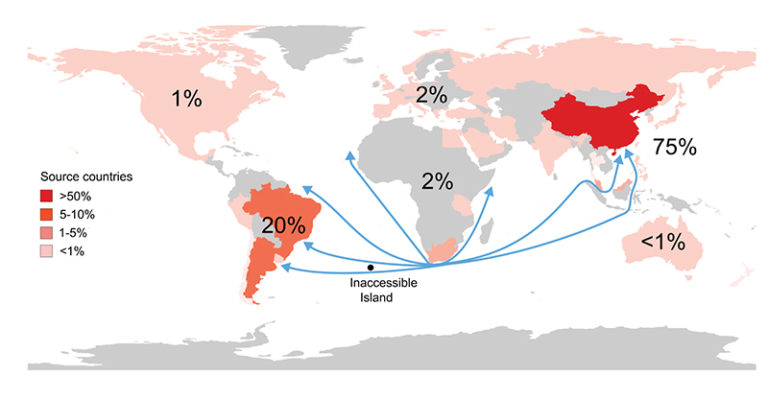
The countries where the bottles collected on Inaccessible Island in 2018 were manufactured. Arrows indicate the major shipping routes around Cape Town; percentages reflect the contribution of each continent. Source: University of Cape Town
‘Unlike much general household litter, bottles can be useful tracers because they often have marks that indicate where and when they were made, giving an estimate of the maximum time they could have been at sea.’
‘We could also use the presence of marine animals – such as goose barnacles – on the bottles as another indicator of how long they had been in the ocean,’ says Ryan.
Researchers combined information on the origin and age of the bottles they collected with models of oceanic currents and used this to figure out whether the bottles could’ve drifted from the country where they were made.
‘Because we started monitoring litter on Inaccessible Island in the 1980s, we’ve been able to chart long-term changes in the origins of bottles over the last three decades,’ says Ryan. ‘When we first visited the island, most litter drifted 3,000 kilometres from South America.
‘By 2009, Asia just surpassed South America as the main source of bottles, and by 2018, 74% of bottles came from Asia.’
Of the bottles that arrived on shore during the researchers’ stay, 84% were from Asia, of which at least two-thirds of which came from China.
‘Most of these bottles were made within one to two years of washing ashore, whereas it would take four to five years – at least – for bottles to drift from Asia via the Indian Ocean. Most litter from China would be more likely to end up in the North Pacific garbage patch than at Inaccessible Island.
According to the report these been a steep increase in merchant shipping between Asia and South America, and currently there are over 2,400 ships passing the archipelago of Tristan da Cunha (of which Inaccessible is a part) each year.
It’s more realistic that most of the Asian bottles found were dumped off ships. This practice is illegal and contravenes the 1989 Annex V of the International Convention for the Prevention of Pollution from Ships (MARPOL).
‘Our findings don’t detract from the fact that most litter in coastal waters comes from land-based sources,’ says Ryan. ‘But there is a need for greater scrutiny of the amount of litter ships drop at refuse-receiving facilities while in port to ensure compliance with MARPOL regulations. Asian-flagged vessels in particular seem to be problematic, because Asia is also by far the most common source of non-local bottles along the coast of South Africa and Kenya.’
Featured image:Pexels


